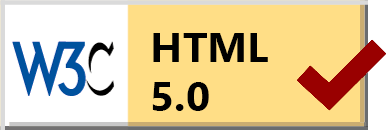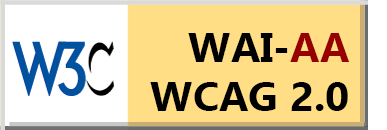Validity and accessibility
 W3C is an acronym for the World Wide Web Consortium, a non-profit organization that defines standards for web-related technologies.
W3C is an acronym for the World Wide Web Consortium, a non-profit organization that defines standards for web-related technologies.
Its mission is to define common standards for Internet development, and in particular for HTML code. The presence of the W3C acronym guarantees that a website is sufficiently accessible and complies with the correct programming methods to be used for its design.
 WAI is the acronym for Web Accessibility Initiative, the initiative launched by the W3C to make websites accessible to Internet users with disabilities. Its aim is to enable people with disabilities (motor, visual, etc.) to navigate and move around the site without losing information.
WAI is the acronym for Web Accessibility Initiative, the initiative launched by the W3C to make websites accessible to Internet users with disabilities. Its aim is to enable people with disabilities (motor, visual, etc.) to navigate and move around the site without losing information.
In 2005, the obligation to make the public web accessible was legally established by article 47 of the law of February 11 (no. 2005-102) for "equal rights and opportunities, participation and citizenship for disabled people", which states: "The online public communication services of State services, local authorities and public establishments dependent on them must be accessible to disabled people". To this end, the Ministry of the Budget has drawn up a document, known as the RGAA, which is supposed to dictate all the rules of good conduct for making a website accessible.
N124 communication meets all government requirements by providing AA level sites, with the exception of pages using Google Maps. To further enhance the user experience, dynamic maps can be integrated into the site, although their code is not RGAA-compliant.